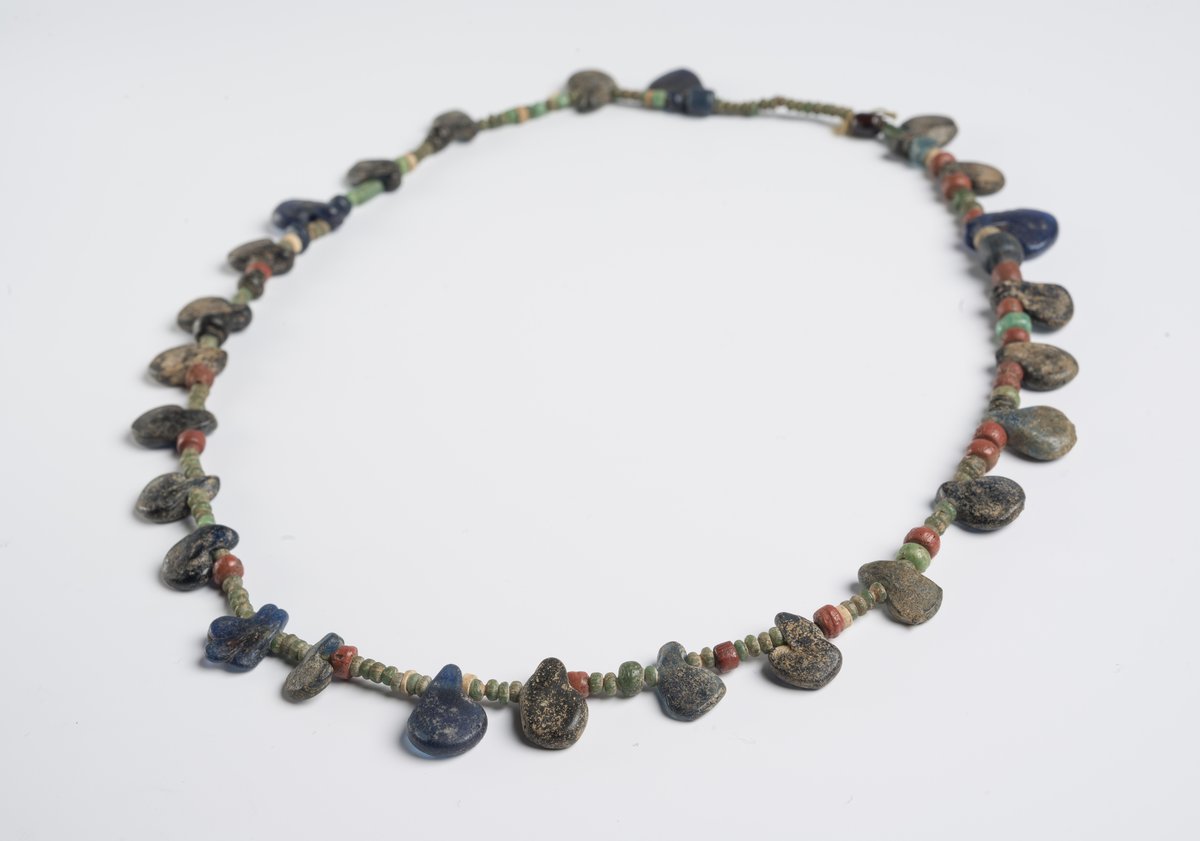
Bead Necklace
Egyptian Art
| Findspot | Kom el-Akhmar, Egypt |
|---|---|
| Date | Ptolemaic Period, Ptolemy I Soter |
| Object type | architecture |
| Medium, technique | Limestone |
| Dimensions | 1.: 34 × 110 × 18 cm |
| Inventory number | 51.2156.1-2 |
| Collection | Egyptian Art |
| On view | Museum of Fine Arts, Basement Floor, Ancient Egypt, Temples and gods |
The relief fragments once decorated the walls of a temple built at the beginning of the Ptolemaic Period at Kom el-Akhmar, near Sharuna in Middle Egypt. The Budapest fragments, together with other similar pieces now in Vienna and Cracow, were found in 1907 by an Austro-Hungarian expedition sponsored by Fülöp Back, a Hungarian merchant in Egypt.
The reliefs depict and name the founder of the temple, Ptolemy Soter I, as well as gods and goddesses. The Ptolemies, who ruled over Egypt following the death of Alexander the Great, made it a conscious part of their religious policy to maintain the ancient religious institutions. By renewing and enlarging old temples or building new ones, they ensured the continuity of the cults of major Egyptian gods. The decorations of these temples show these rulers of foreign origin represented with traditional pharaonic attributes and insignia. Ptolemy I Soter and his son and successor, Ptolemy II Philadelphos (who probably also built at Kom el-Akhmar) provided funds for temple constructions at several major traditional cult centres all over Egypt. The building of the temple at Kom el-Akhmar, an important administrative and religious centre from the 3rd millennium BC, can be seen as part of these religious policies. In earlier times the town was a centre of the cult of the god Nemty, venerated in the form of a dual falcon, while its Ptolemaic temple was dedicated to the local form of the cult of the falcon god Horus.
Katalin Kóthay
This record is subject to revision due to ongoing research.